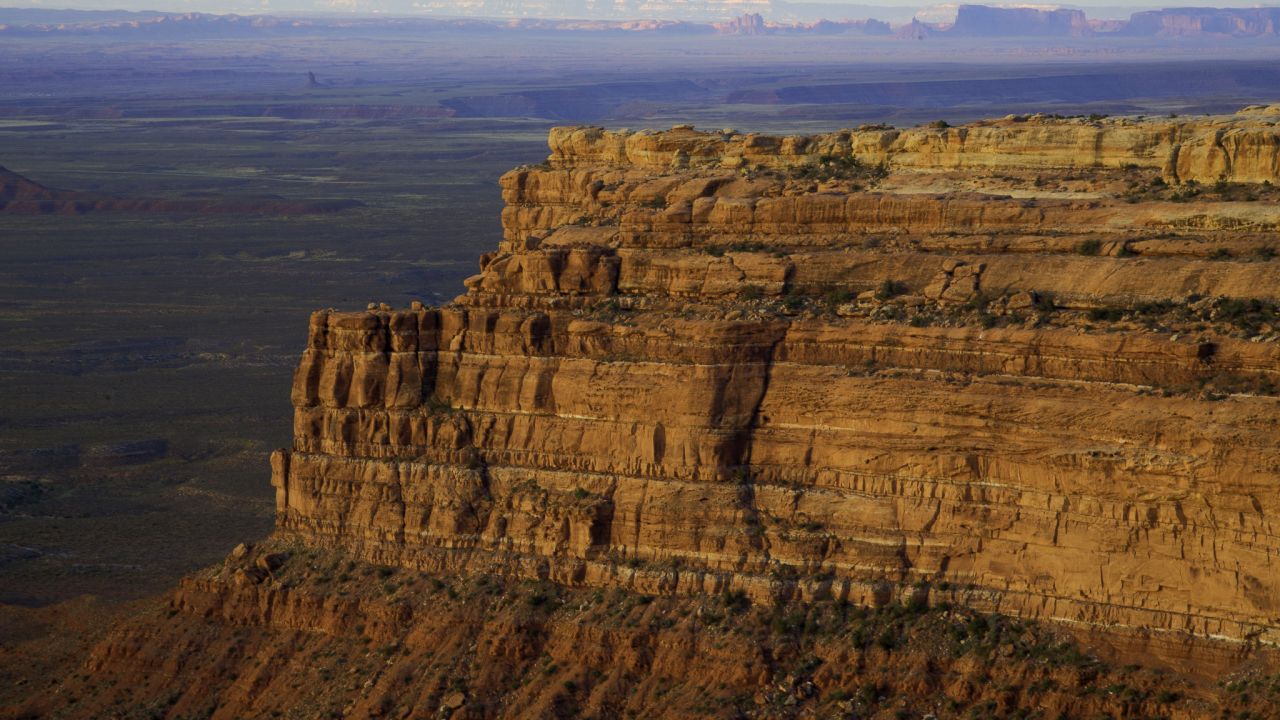
Cedar Mesa Valley of the Gods -- The 1.35 million-acre Bears Ears National Monument in southeastern Utah protects one of most significant cultural landscapes in the United States, with thousands of archaeological sites and important areas of spiritual significance. (Bureau of Land Management)
Before he left office President Obama designated a number of new National Monuments under the authority of the 1906 Antiquities Act. Now 26 of those monuments are facing rollback from the Trump administration. Case in point: Bears Ears National Monument in Utah. The monument as designated by Obama encompasses more than 2,000 square miles long contested over by environmentalists, native tribes and energy, ranching and development interests. This week Secretary of the Interior Ryan Zinke released an interim report calling for drastic reductions in the area under conservation protection. The reduction would be unprecedented and has some experts wondering if it’s even legal.
The New York Times Julie Turkewitz and Coral Davenport write:
In a statement, Mr. Zinke said monument designation was “not the best use of the land.” Mr. Zinke recommended that Mr. Trump roll back the boundaries to protect only areas that include historic and prehistoric structures, such as archaeological sites and remains of dwellings.
The monument, as it stands, is a vast canyon region of red rocks named for two towering buttes called the Bears Ears. It is home to some 100,000 archaeological sites.
The Antiquities Act, signed by Roosevelt in 1906, gives presidents the authority to protect designated areas as public monuments. In the century since its passage, presidents have used the law to protect millions of acres of public lands, including the Grand Canyon and the Muir Woods in California.
In recent years, however, conservative lawmakers have criticized Democratic presidents for what they view as overuse of the act. The move to protect Bears Ears was particularly controversial because of the monument’s size; it is more than 2,000 square miles, four times larger than Canyonlands National Park, the largest national park in Utah.
But no president has ever used his authority to eliminate or drastically reduce the size of a monument. (Presidents have on occasion modified monuments designated by their predecessors.)
Mr. Zinke declined to quantify the exact area of the proposed smaller monument, but said that the new boundaries should be limited to “the smallest area compatible” with the management of those sites.
Read the full story at The New York Times and find out about what action environmentalists are taking from the Natural Resources Defense Council.
Read more installments in our series “While He was Tweeting” — keeping an eye on Trump’s wrecking ball.



